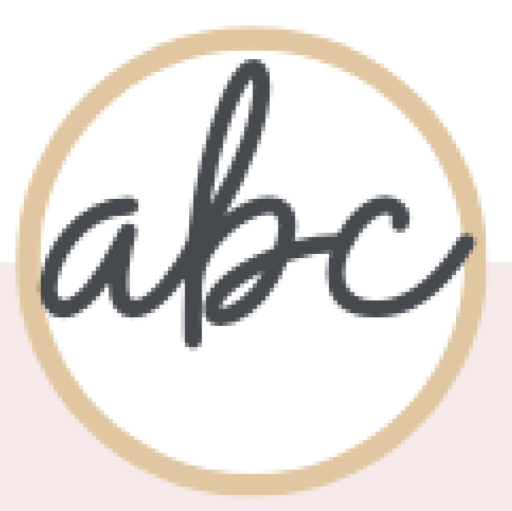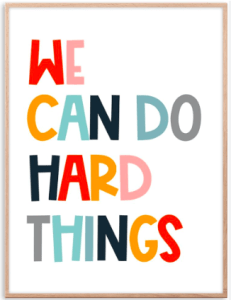How can we create new, better, more equitable systems for our learners?
Equity has been a popular word in education for a while now. Unfortunately, I don’t think everyone is using the same definition of equity and what equity looks like in designing educational systems and experiences. My district has been confusing the term ‘equity’ with ‘equality’ for the past 7 years, and it’s been driving me nuts! Enough already. When we consolidated as a district, the leadership team would say that they were trying to make each school within our district ‘equitable’ and created ‘equity matrixes’ – but that was an attempt at making sure each school had the same resources, materials, etc., not making sure each school had what they needed. They were aiming for uniformity vs. equity. I’m also baffled by this idea that people consider Diversity, Equity, & Inclusion to be a separate concept that requires DEI Coaches in each building and a DEI Director at the central office level. DEI concepts should be at the heart of all decision-making when it comes to education. DEI should be infused in the culture of our schools, in all that we do. When reflecting and refining school systems, teaching, and learning, we should be asking ourselves; who are we (unintentionally) leaving out, what are the anticipated barriers that we can try to remove or avoid, and what are the actual needs that we can satisfy, so that we can be truly equitable – providing everyone access to inclusive learning experiences. The Univeral Design for Learning Framework provides us with these reflective questions to help us design equitable education for all. If we are implementing UDL practices, we will be incorporating a DEI lens in that process.
Equity = learning about the individuals who make up the learning community (assuming nothing by asking genuine questions for clarity), identifying what they need, and providing them with what they need. Designing equitable educational experiences requires an ongoing effort – this work of making learning relevant and applicable for the individuals in front of us is never ‘done’.
Some educators are on the verge of designing equitable learning experiences for students, but they (unintentionally) fall short. They might scratch the surface by utilizing Responsive Classroom’s First Six Weeks to co-create their learning community with their students. Some teachers have kids fill out “All About Me” surveys/worksheets/posters, or teachers sit down with individual students to conduct an interest inventory in an interview-style to ‘get to know’ the learners in their classrooms. They might kick off the new school year with an “Identity” unit to help kids explore and express who they are as individuals and how they will contribute to their learning community. Some teachers sit down with the students’ previous teachers to learn more about their new students. During the placement process we have teaching teams review the family input forms to help us find an appropriate placement for each student. All of these are great first steps in designing equitable learning experiences. The key move from being a ‘good’ teacher to an ‘excellent’ teacher, is when the teacher changes, revises, and/or refines the ways students receive information, engage with information, and express their learning that reflects their identities and needs. When students can make connections with their self, others, and the content, we know that we have effectively created equitable learning experiences for students.
It’s easy to see equity in education as a matter of fairness, access, and inclusion, but that’s only the case if what’s being fairly accessed is a system of teaching and learning that’s fluid, responsive, dynamic, neutral, alive, and able to meet the needs of an increasingly global population. ~ Terry Heick
When educators view themselves as lifelong learners and responsive teachers; modeling curiosity, flexibility, creativity, and resourcefulness, we can design equitable learning experiences for all. I have some teachers in my building who believe we give too much voice and choice to our students, and view empowering students as creating entitled students. There are teachers who still believe that they should be the authority in the classroom, the one with all the answers, and that learning how to be compliant and follow adult directions is more important than helping students advocate for themselves and genuinely engage in their learning journey.
As a learning leader in a consolidated district, our biggest conflicts with creating equitable systems comes from rigid, closed-minded thinking at the top, the budget, and decision-making of the allocation of resources (ie staff). ALL of these are adult-related issues, and not equity-based solutions.
Our youngest learners, most senior community members, and anyone who is pushing a stroller, holding a carseat, using a wheelchair or crutches can not access the school building because our double doors at all entrances are extremely heavy. I’ve been advocating for 7 years to get door assist hardware as a universally designed best practice, and our facilities director refuses to add this hardware because ‘it is not necessary per building codes’ (I’ve even found the money to purchase the hardware, and he still won’t place the order and install the hardware). Mind-boggling.
When it comes to our Multi-Tiered System of Supports (MTSS), you would think our district would look at student data for each school and each grade level to assess what the needs are and where they are, and then allocate intervention services and supports where the needs are. Instead, our district is trying to provide ‘equal’ number of interventionists at each building based on our enrollment numbers (not based on academic or behavior needs). This ensures that there is stability and consistency for the adults in the interventionist positions, but we really need people to be flexible, fluid, and responsive to move where the needs are within the district.
Another example is when our school welcomed 23 newcomer students (unexpectedly) and we needed to increase our teaching team and support staff in our Multilingual Department (ML), and we received an incredible amount of pushback from our district leadership team. We did eventually increase the teacher FTE, hired 2 paras, and established a relationship with an ML consultant to support our teaching teams in working with these new students and families. It shouldn’t be this hard. There must be a better way.
During my second year as an elementary principal, I made the following shifts to start developing more equitable learning experiences for our school community members (**I am aware that this is just the beginning of a long list of things we will continue to revise and refine with input from our community members**);
- Streamlined our registration process to reduce redundancies and accessibility for all community members.
- Added visual signage throughout our building so everyone can navigate our large building fairly independently.
- We ask for family input and previous teacher input in the student placement process.
- Our school budget is used to ensure that all students are provided with what they need during the school day. We reduce stigmas associated with socio-economic diversity to reduce anxiety and stress for students and families.
- We serve breakfast after the bell in classrooms for all students.
- Provide all school supplies and use a general supply closet – no more school supply shopping lists for families
- Our school (or PTO) pays for all field trip expenses, and all students experience 2 field trips per year – one in the fall and one in the spring. We no longer ask each family to donate money at the beginning of the year for field trip expenses.
- All students have access to all buses (close to their homes) – we no longer have a ‘special education bus’.
- Created playground structures that are inclusive and accessible for all ability levels.
- We’re working on getting door assist hardware for our entryway – so people don’t have to struggle entering our building.
- All students are provided with a digital device during the school day – we no longer allow personal devices to come to school.
- We provide school gear, water bottles, and clothes for all students, as they need it.
- We have students and staff help select what recess equipment to have in our recess shed – this way, all personal items can stay at home.
- We provide morning movement for all families who need to drop kids off at school before the school day begins.
- We have upgraded our communications platforms to be translated in many different languages, and we use voicemails, texts, and emails to get messages out to all families.
- We have developed a visual food menu to show students what meal options are available to them each day.
- We apply our school logo stickers on our hallway walls, hung at student eye-level to help our youngest learners find their way to their classrooms.
The best thing we can all do to ensure equitable learning opportunities and experiences for all is to;
- Stay curious by asking questions and asking for feedback/input, and
- Show that we were genuinely listening by reflecting on and incorporating what we learned from our students into the design of our teaching and learning.
Equity_AC_4_25_24 by Alison Celmer




 them to every classroom teacher, special educator, essential arts teacher, school counselor, interventionist, office member, etc. I was immensely proud of the work we had accomplished together through one of the most traumatic shared experiences we’ll ever encounter. We also proved to ourselves, and our community, that we can rise to the challenge and we’re not afraid of doing what it takes to support all of our students.
them to every classroom teacher, special educator, essential arts teacher, school counselor, interventionist, office member, etc. I was immensely proud of the work we had accomplished together through one of the most traumatic shared experiences we’ll ever encounter. We also proved to ourselves, and our community, that we can rise to the challenge and we’re not afraid of doing what it takes to support all of our students.